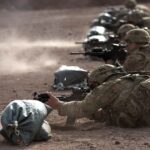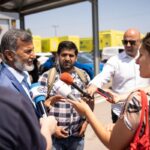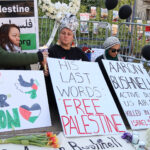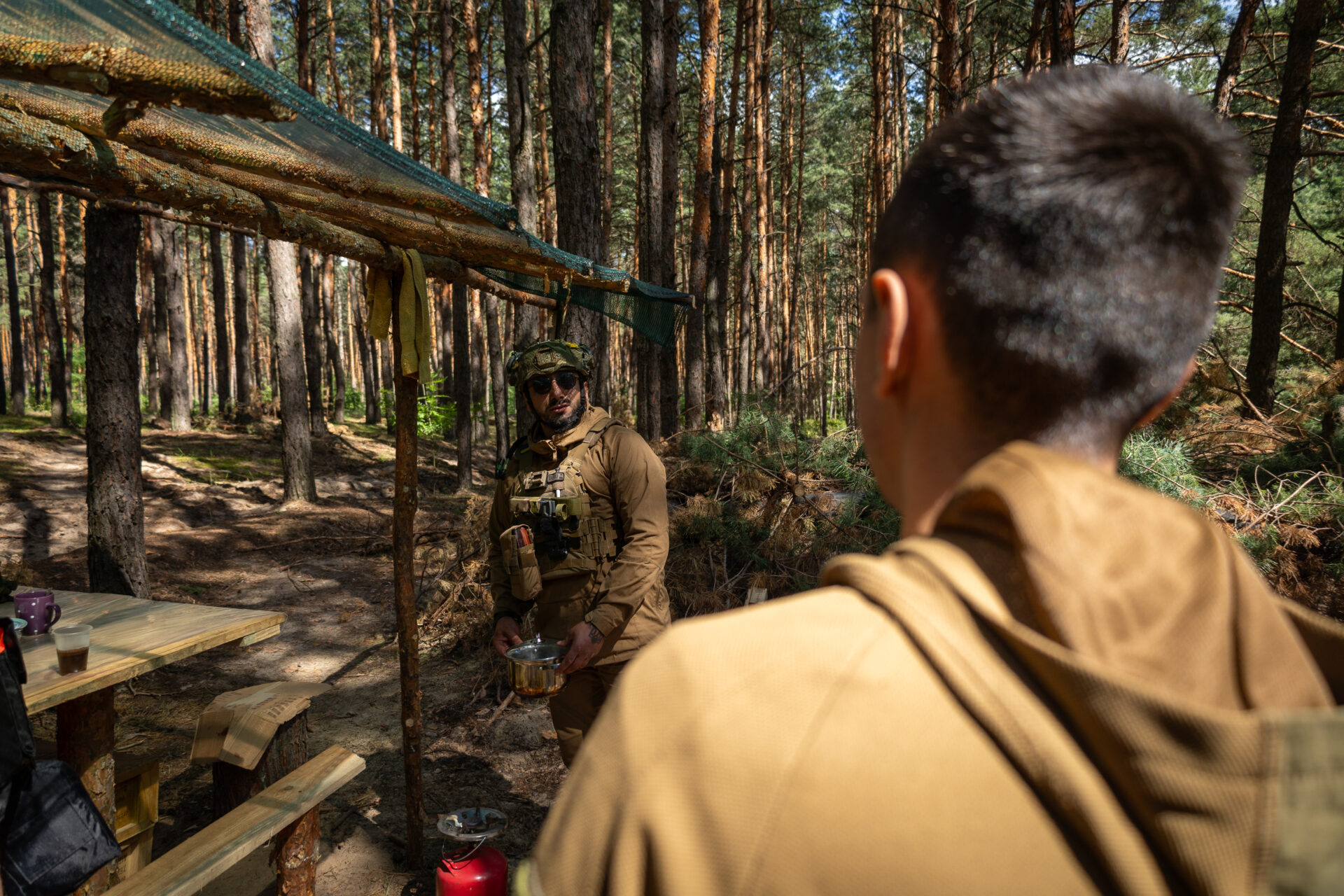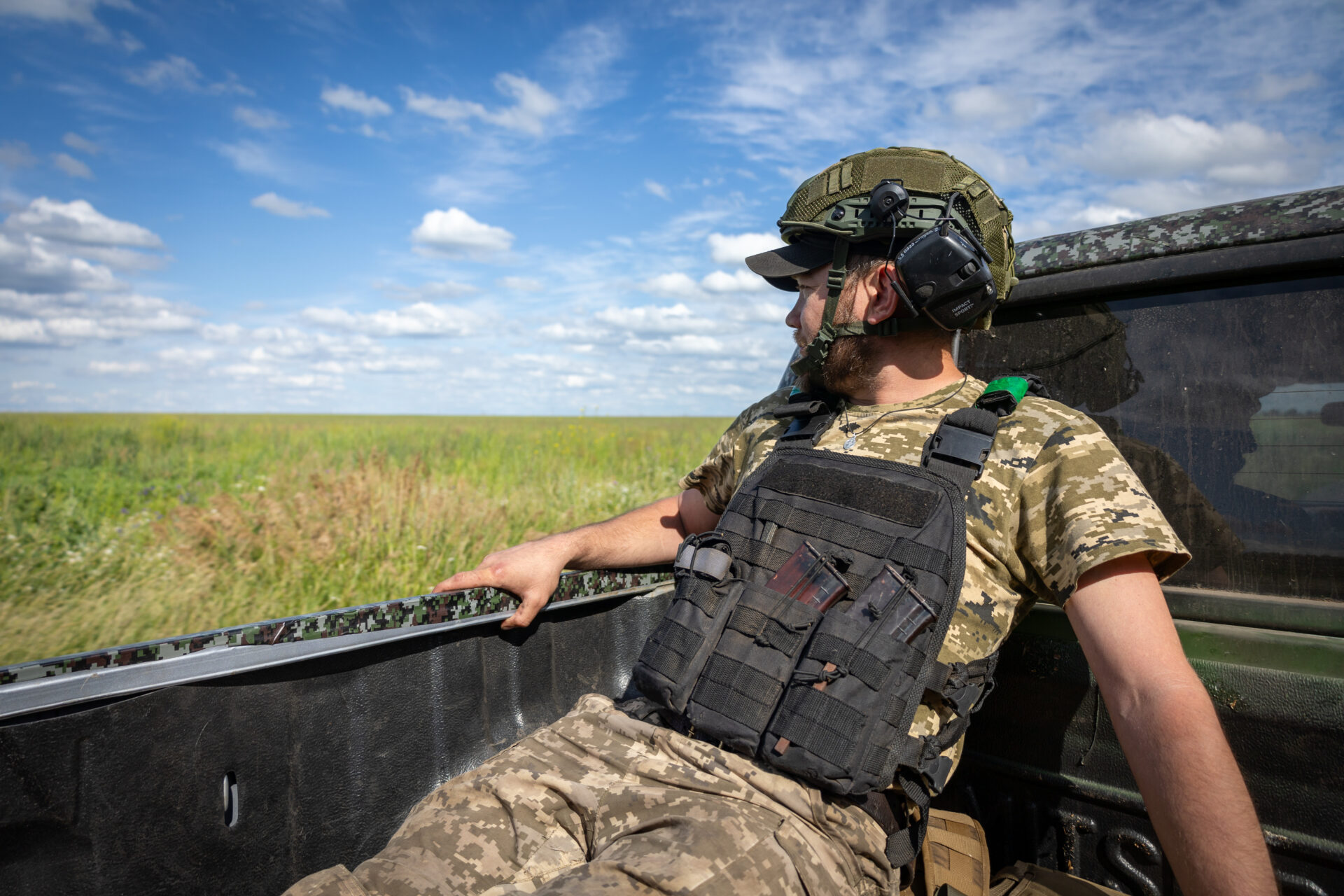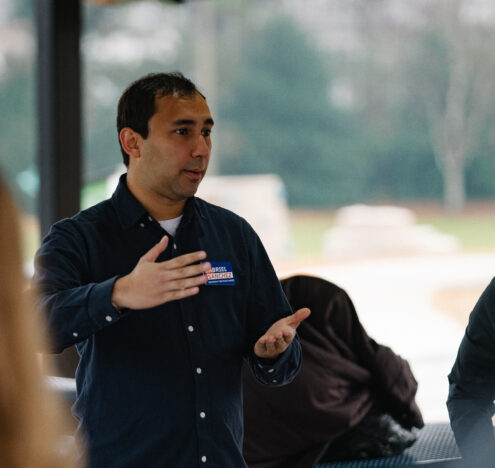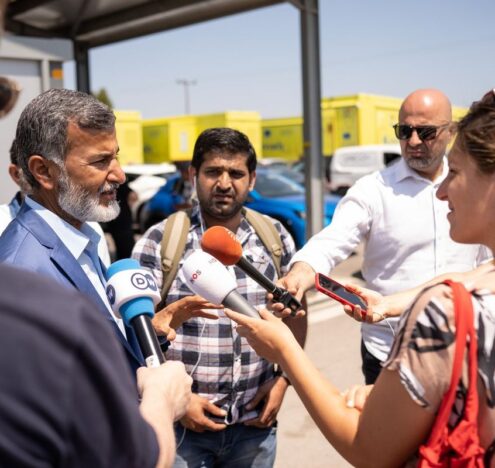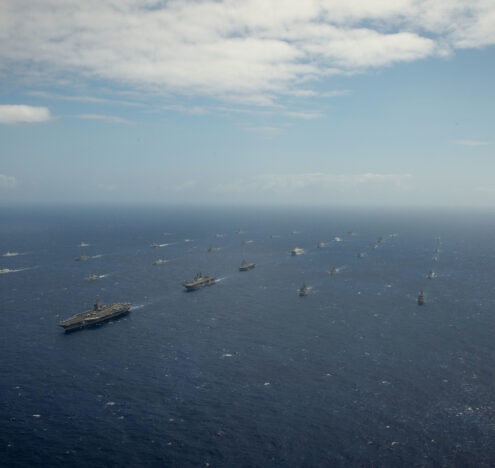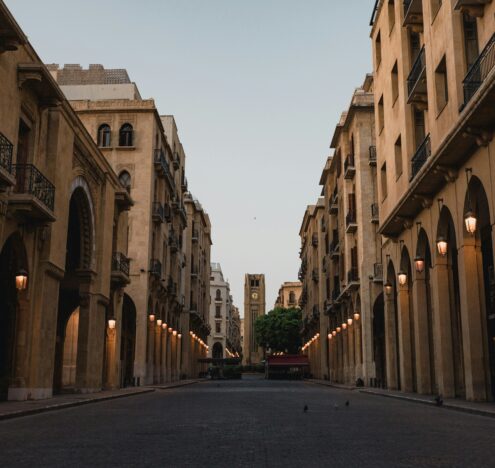Shustriy struck a relaxed but professional pose as he stood near a makeshift table with ammo crates and wooden planks for seats. The 24-year-old captain has been a company commander since Russia invaded Ukraine in February of last year. He said he previously served in Donetsk and Zaporizhzhia, regions to the south where the counteroffensive is underway, before coming to northeast Ukraine 10 months ago. He, Czech, and the other two soldiers seemed unphased by the artillery that exploded every couple of minutes around the forest.
“The situation is pretty intense here,” Shustriy admitted, saying that Russian artillery strikes had recently drastically intensified. “Yet still we hold the line.” Shustriy acknowledged that Russian forces had recently gained some territory, but he declined to specify details to avoid giving away his unit’s position. On Wednesday, July 19, Russia’s defense ministry reported that its forces had recently gained a bit of territory and captured a railway station near Kupiansk.
For the past several months, the frontlines in northeast Ukraine have remained largely unchanged. Russian forces had advanced far west of where Shustriy and his troops now were when they invaded last year, reaching the outskirts of Kharkiv, Ukraine’s second-largest city, around 100 km (62 miles) west. But Ukrainian forces managed to repel the Russian assault and go on the offensive themselves. They pushed Russian forces to the east of Kupiansk in September and retook the territory where Shustriy and his troops were now positioned. Since then, neither side has made major advances. But as Ukraine moves slowly forward with its counteroffensive in eastern and southern Ukraine, Russia appears to be trying to break through Ukrainian lines in the northeast, possibly in a bid to divert Ukrainian forces.
Late last month, Ukraine’s deputy defense minister, Hanna Maliar, described the situation in eastern Ukraine as “difficult,” stating that Russian forces were launching an assault toward Kupiansk and the city of Lyman further to the south. A few days later, she said that Ukraine had repelled the assault. On Monday, 17 July, Maliar wrote on Telegram that Russia continued to focus its main battle efforts towards Kupiansk and other parts of eastern Ukraine. “Heavy battles continue,” she wrote on Telegram. “The enemy has been actively advancing since the end of last week in the Kupiansk direction of Kharkiv region.” She said Russian forces were looking for weak points and launching assaults with the aim of pushing Ukrainian forces back across the Oskil River that runs north-south through Kharkiv region and Kupiansk city. Russia aims to recapture lost territory and force Ukraine to divert forces from other parts of the country to the northeast, she added. “Our troops are on the defensive, putting up strong resistance,” she wrote. “The situation is complicated. Hot battles are going on now.” The next day, she said the Russian offensive was currently unsuccessful and that “the initiative is already on our side.”
“They were attacking us 24/7,” he said. “We lost a lot of our men, our battalion. I lost a lot of my good friends in May, and you know –” he paused, then continued, “it’s getting hard for me.”
Standing in a square atop a hill in Kupiansk last week, Andriy Kanashevych, the head of the city’s military administration, painted a difficult picture of the frontlines some 10 kilometers (6.2 miles) away.
“The situation is pretty tough there, the enemy’s trying to attack our positions,” he said, a pistol strapped to his waist. “They use their aircrafts to target our troops.”
While praising Ukrainian troops for putting up a strong defense, he seemed to concede that Russian forces have made some gains. But he downplayed their significance. “Even if they move forward for a bit, we kick them out,” he said. “So I can say that the front line is almost stable.”
Holding onto the territory has come at a heavy price, said Czech. He said that in May, Russian forces launched a strong offensive that inflicted heavy losses.
“They were attacking us 24/7,” he said. “We lost a lot of our men, our battalion. I lost a lot of my good friends in May, and you know –” he paused, then continued, “it’s getting hard for me. This shit hits me badly. After almost a year and a half, I can say I’ve seen so many people die. I’m a paramedic, and my duty is to save our men. Sometimes I fail, but in these one-and-a-half years, I saved 95 men.”
Future Needs
As Czech and his comrades held the line in northeast Ukraine last week, NATO leaders wrapped up a two-day summit in Lithuania where the question of Ukrainian membership featured prominently. While a clear path toward membership for the embattled country was not reached by the alliance’s members, Shustriy said he believed membership would benefit Ukraine because it would ensure a more stable supply of munitions and equipment. “It’s been a while since the full-scale invasion started, and we still don’t have enough ammunition and weapons,” he said.
Not wanting to provide what would be useful information to Russian forces, Shustriy refrained from specifying what supplies his unit needed. But behind him Czech shouted: “Drones!”
The Ukrainian troops said Russian forces in the area enjoy air superiority. Russians, they said, have been using a swarming tactic with drones whereby they attack with several at once. While the Ukrainian troops said they may be able to take down one of the drones, they can’t shoot all of them down. Russian and Ukrainian forces use drones for a number of purposes, ranging from observation and surveillance to attacks. One tactic popularized by both sides has been to drop grenades on enemy troops. The Ukrainian soldiers said Russian forces in their area had been dropping more powerful grenades that could destroy armored vehicles.



